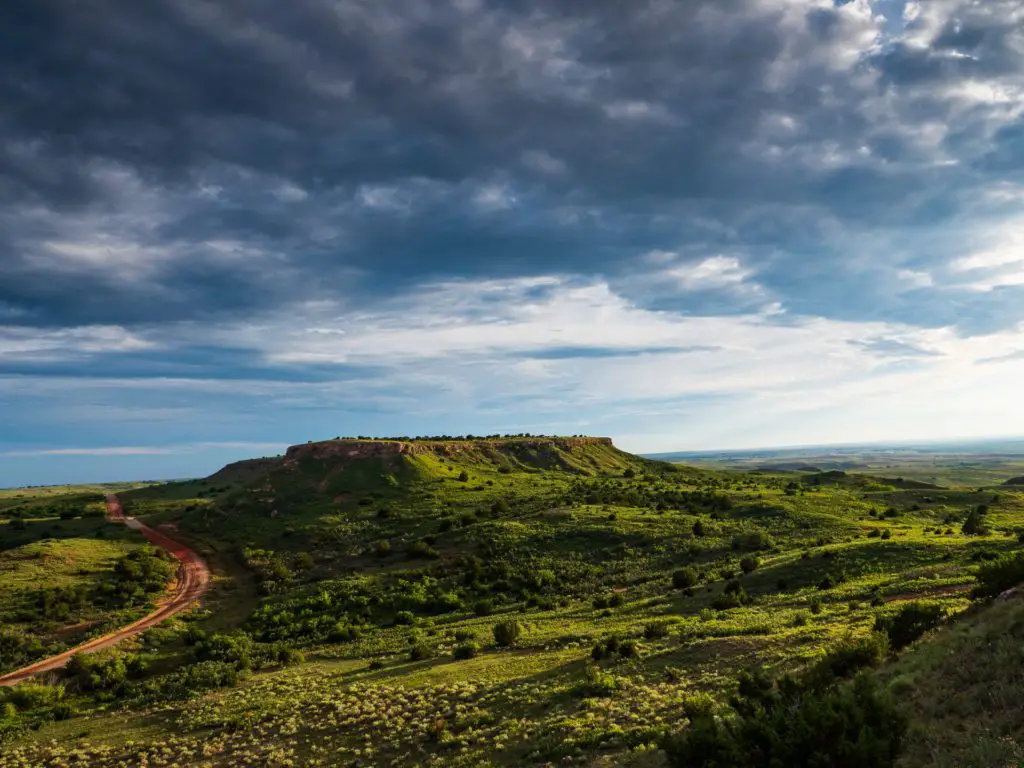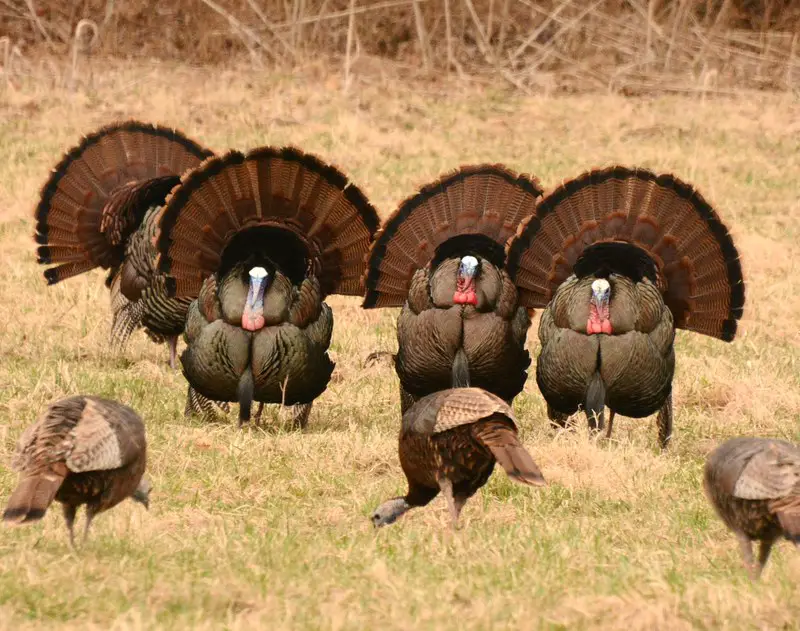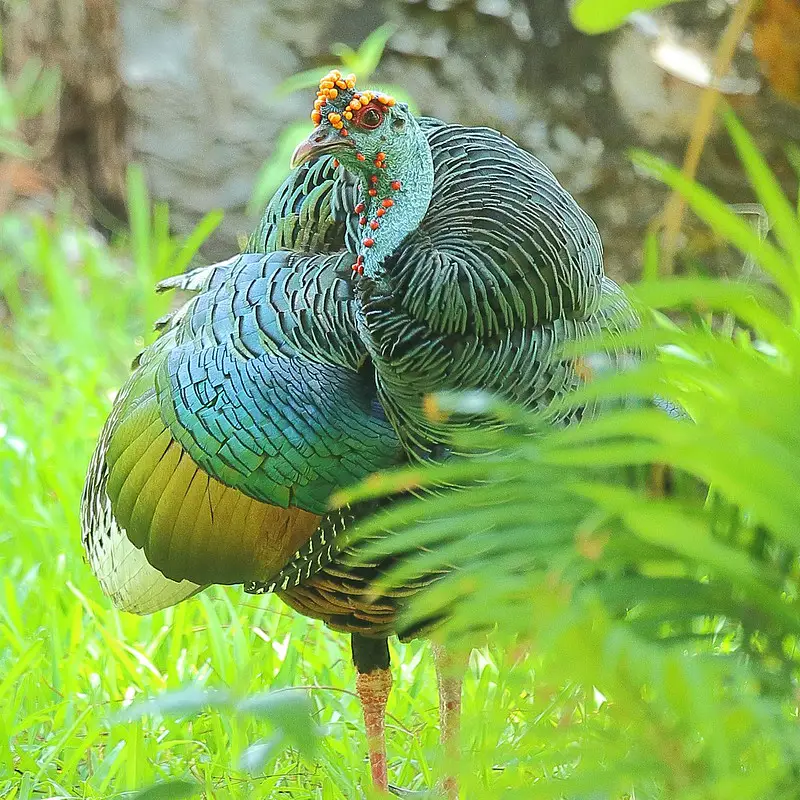
Looking for a unique trophy? A trip of a lifetime? How about an Ocellated turkey hunt?
There are only two turkey species in the world. The first, Meleagris gallopavo, includes the Eastern, Merriam’s, Osceola, Rio Grande, Gould’s, and all the domestic subspecies. The second is Meleagris ocellata known as the Ocellated turkey.
Few Americans are even aware of the Ocellated turkey. However, no one can deny they are absolutely splendid animals bearing as much resemblance to the peacock as the North American wild turkey.
Because there is such little awareness of these turkeys, most people have a lot of questions when they learn about them. What follows are the answers to some of the most frequently asked questions.
What is the World Slam of Turkey Hunting?
The NWTF keeps records on hunters who have completed different “slams.” These include the Grand Slam, Royal Slam, and US Super Slam as several others.
The World Slam is complete when an individual takes one each of an Eastern, Rio Grande, Osceola, Merriam’s, Gould’s, and Ocellated turkey. If you’re keeping track, this is a Grand Slam, plus a Royal Slam, plus an Ocellated turkey. This does not have to be completed in a certain amount of time.
The Ocellated turkey is also part of the Mexican Slam which also includes the Gould’s and Rio Grande turkeys which all must be killed in Mexico.

Where can you hunt Ocellated turkey?
Are there Ocellated turkeys in Florida? Nope! Don’t confuse the Ocellated turkey with the Osceola turkey, which do reside in Florida.
Like the Osceola turkey, the Ocellated turkey does have a rather limited range. It can only be found in the Yucatan Peninsula of Mexico and in limited areas of Guatemala and Belize. The Ocellated inhabits the thick tropical forests as well as the more open farms and ranches in the region.
How much does an Ocellated turkey hunt cost?
Ocellated turkey hunts typically cost between $2,500 and $4,000. This is less than most guided whitetail, elk, and bear hunts in the United States.
This price usually includes transportation to and from the hunting camp, guides, meals, sleeping arrangements (tents/cabanas), and trophy preparation.
This price usually does not include airfare, hotel stays before and after your hunt, shotgun rentals, tips, and any other species you may wish to hunt on your trip. I suggest renting guns in Mexico so that you do not have to deal with the “legalese” that comes with getting your firearm in and out of the country. Be certain you do not bring any ammunition into Mexico!
What should I expect on a Mexico Ocellated turkey hunt?
While your Mexico Ocellated turkey hunt will be guided, don’t expect luxurious lodges or an easy hunt.
You will typically be transported to your hunting area in four-wheel drive jeeps. Your camp will be a cabana with screen sides and a wooden floor. There will normally be a separate shelter for dining. Meals are usually prepared by a professional chef.
There are some outfitters hunting large ranches that do house you in lodges. While the security of four solid walls can be nice, don’t expect the Ritz Carlton.
Temperatures in the area can reach over 100 degrees during spring turkey season. Be sure to pack light camoflauge clothing so you can stay cool and hidden during your Ocellated turkey hunt. It is also recommended to bring bug spray or a thermacell.
While Ocellated turkeys are not easy to hunt, success rates are usually pretty high. The guides are good and they make sure to get you in the right spot. Because Ocellated turkeys don’t come as readily to calling as the North American wild turkey, you will likely be spending a lot of your time in ground blinds in places that have been pre-scouted by your guide. You will be using sit-and-wait ambush style tactics to take your Ocellated.
Your outfitter will help you prepare your trophy for exporting and deal with the red tape involved with getting it into the States. Be sure to arrange a taxidermist ahead of time. Make sure that he or she has all the necessary USDA certifications for receiving and preparing foreign animals.
Do Ocellated turkeys gobble?
Ocellated turkeys do not gobble the way the other species of turkeys gobble. Whether you call it gobbling, singing, or drumming it is a much softer sound. You can hear it in the video below.
The hens make soft purrs and clucks, but no loud aggressive yelping and cutting.
Because these turkeys are quieter, it can be difficult to both locate and draw them in. There are some hunters that have found success calling, but most hunters rely on scouting to set up in good ambush spots.
How big do Ocellated turkeys get?
Ocellated turkeys are smaller than their northern cousins. A mature tom ocellated turkey typically weighs about 12 pounds, give or take a bit. Hens are generally 6-8 pounds.
The Ocellated turkeys have shorter, thinner legs than the North American wild turkey.
How can you tell a hen from a tom Ocellated turkey?
Unlike other turkeys, Ocellated turkeys do not have beards. However, the toms do have spurs. Very long spurs at that. It is not unusual for a mature tom Ocellated turkey to have spurs over 1.5 inches.
Besides spurs, the toms feathering will appear slightly more brilliant than the hens. Note that the breast feathers do not differ between the sexes.
The tom has a blue protrusion on the top of his head known as a crown. This crown will swell up and change colors during the breeding season. The hen does not have this crown.
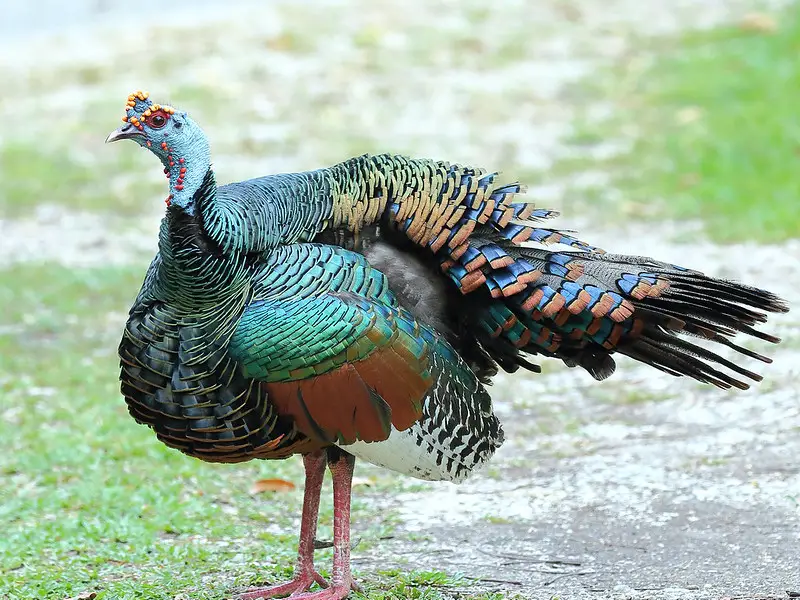
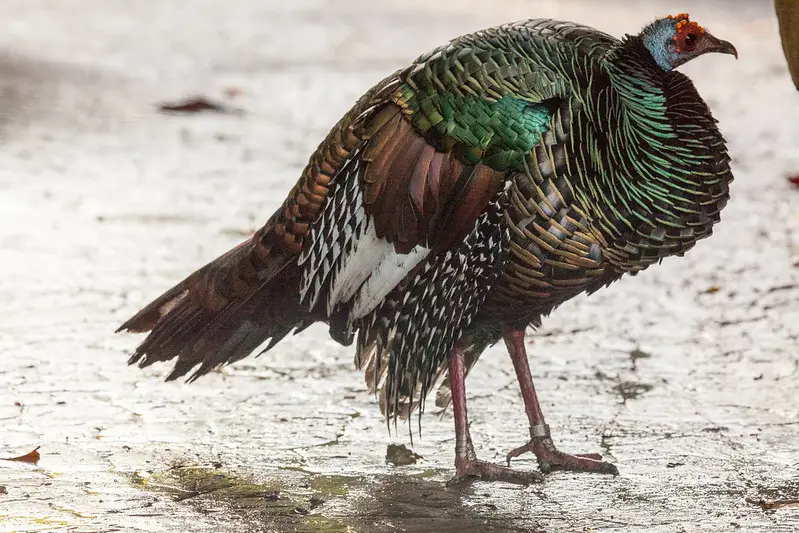
Left photo courtesy of ryanacandee on Flickr.
Right photo courtesy of russellstreet on Flickr.
Are Ocellated turkeys endangered?
The Internation Union of Conservation of Nature (IUCN) lists the Ocellated turkey as “Near Threatened” which is two steps down from “Endangered.” The population is decreasing with an estimated 20,000 to 49,999 mature turkeys living.
There are several reasons for the decline of the Ocellated turkey. The first is habitat degradation. Deforestation and land purpose changes have taken their toll on the turkeys.
Ironically, one of the best things we can do as North American hunters to help these turkey populations is to go hunt them. An influx in capital from tourism, hunting permits, and outfitter businesses encourages the locals to try to protect this resource. If they see this colorful turkey as a golden goose, they are more likely to take conservation seriously.
Reserves have been established in Mexico, Guatemala, and Belize to protect the wildlife in these areas. The more visited these areas are, the less likely poaching will occur on these lands. So far, these reserves have been somewhat of a success in protecting the Ocellated turkey.
Conclusion
The Ocellated turkey is rare, beautiful, and challenging to hunt. In my opinion, an Ocellated turkey hunt is the ultimate turkey hunting adventure.
If you have the time and money, consider contributing to the conservation of this amazing animal by traveling to the Yucatan Peninsula to hunt Ocellated turkeys.
If you enjoyed this article, you may also enjoy my article on hunting the Gould’s turkey.

